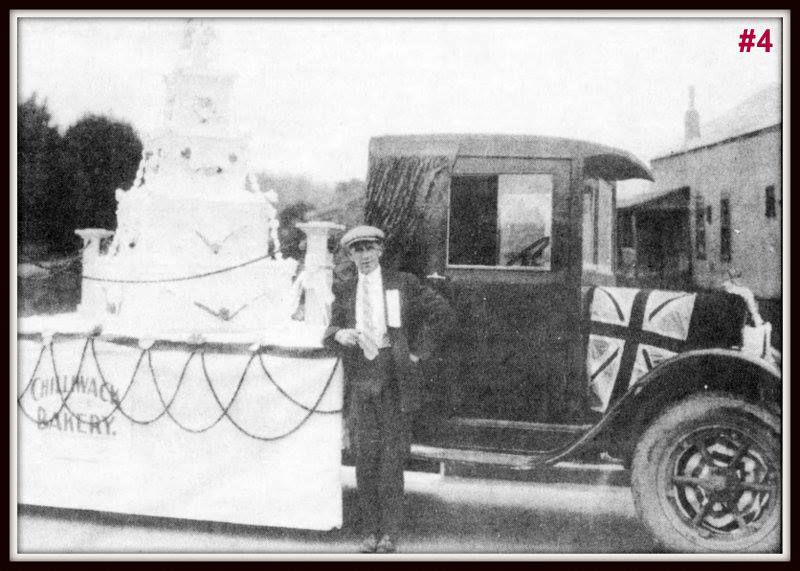The Tuberculosis Era in Chilliwack
- Monica Braun
- Mar 23, 2024
- 4 min read
Tuberculosis (TB) has been around since Hippocratic times (460 - 377BCE). Commonly called “consumption”, in the 1800’s, it was discovered in 1882, by Dr. Robert Koch, to be caused by a type of mycobacterium.
Introduced to Eastern Canada by European explorers and settlers in the 1700’s, TB found its way to British Columbia by the mid 19th century with the onset of the Gold Rush and increasing expansion of settlers seeking land.
Articles relating to TB appeared on an almost weekly basis in the Chilliwack Progress as early as 1891, the year of the newspaper's inception. These articles relayed current information relating to tuberculosis: progress being made towards a cure, treatments available, and health recommendations to help curb spread of the disease.

Earliest mention of tuberculosis in the newspaper was an article about Dr. Koch, his discovery of the bacteria that causes TB, and his continuing efforts to find effective treatments to combat it. (Image Credit: Chilliwack Progress archives, May 7, 1891).
Interestingly, between 1910 and 1930, articles regarding TB in cows received equal attention. The discovery that TB could be transferred to human's through the consumption of milk, caused a concerted campaign to eradicate the disease in cows. Based on various news reports, 15,000 - 20,000 cows in BC were tested annually for Bovine TB. The Fraser Valley became known as a TB- free zone by the mid-30's thanks to the vigilance and cooperation between the Dept. of Agriculture and the dairy farmers.

Image Credit: Chilliwack Progress Archives, Jan 14, 1932
Unfortunately, TB did not affect all residents of Chilliwack equally. The rates of infection and consequent mortality among First Nations people from TB was 8-10x higher than the non native population. This was partially attributed in the early 1900's to an increasing lack of care due to discrimination.
Many First Nations people were not accepted at the hospitals or the sanatoriums that were built specifically to treat people with TB. It wasn't until the mid-1930's that the government took a more active approach with the care, treatment and prevention of TB among First Nations people.
In 1935, Coqualeetza, the 2nd largest residential school in Canada, became the site of a Preventorium, the first of its kind in Canada. Using one of the barns on the school grounds, residential children deemed at risk for developing TB were chosen to live at the Preventorium.

A photo of the Preventorium situated on the grounds of the Coqualeetza Residential School in Sardis. (Image Credit: canadiangeographic.ca)
When the Coqualeetza residential school closed in 1938, the federal government purchased the property from the United Church, converting the school into a hospital specifically to treat First Nations people with TB. One of only three hospitals in BC dedicated to treating TB in First Nations people, it opened in September of 1941, with space for 175 Indigenous patients; the first being six girls transferred from the Preventorium.
While rates of TB infections peaked in the 1940's for non native residents of Chilliwack, Coqualeetza Indian Hospital continued to treat Indigenous TB patients until it closed in 1969.

Image Credit: Chilliwack Progress Archives, August 28, 1968
During the height of TB, the government implemented mass screening campaigns using mobile chest x-ray units that travelled to communities throughout the Fraser Valley. These mobile units would screen an average of 300 residents per day. TB screening with radiographs, as well as the TB skin test were done by these mobile units until 1975.

Image Credit: Chilliwack Progress Archives, Oct 3 1945
How many of you born before 1970, remember getting the TB prick test in school? Although there were effective antibiotic treatments for TB in the 1950's and 1960's, the TB vaccine (BCG) which had been available since the early 1920's only had a 50% efficacy rate in preventing the disease. So it became increasingly obvious that the need for regular TB screening to control the spread of the disease was needed.
Around the same time, in the late 40's, a movement toward a more comprehensive program of prevention in children of many of the diseases of the time: small pox, polio, measles, diphtheria, as well as TB, resulted in regular screening, testing, and vaccinations within almost every public school in BC. In fact, universal screening for TB was required for all children until the mid-1970's due to a perceived increase in infection rates.

Image Credit: Chilliwack Progress Archives, Nov 27 1959
Many Chilliwack residents remember a time when tuberculosis was an ever present threat. But thanks to increased knowledge of the disease, increased sanitation and pasteurization of milk, better early diagnosis, better ability to isolate those infected, enhanced medical interventions, and the introduction of nurses into the community, the BC death rate was reduced from a high in 1906 of 200 deaths per 100,000 people, to 55.3 deaths per 100,00 people in 1945, to 3.9 deaths per 100,000 people in the 1950's. To put that into a current perspective – the death rate from COVID in Canada (2020) was 135 deaths per 100,000 people.
While Tuberculosis is a disease that's been very successfully controlled in Canada for quite a few decades now, world wide it is still the second highest cause of death from an infectious disease.
Sources Used:
Chilliwack Progress Archives




Comments